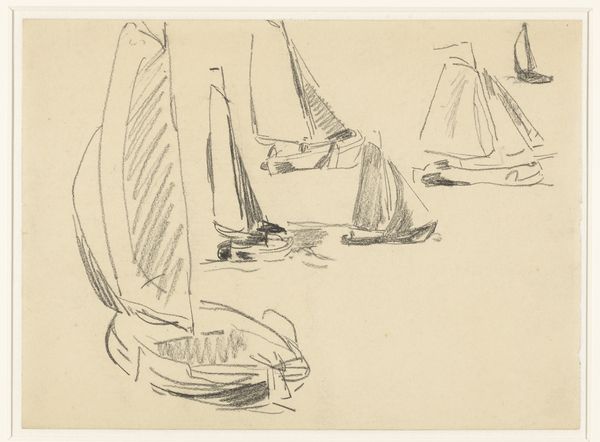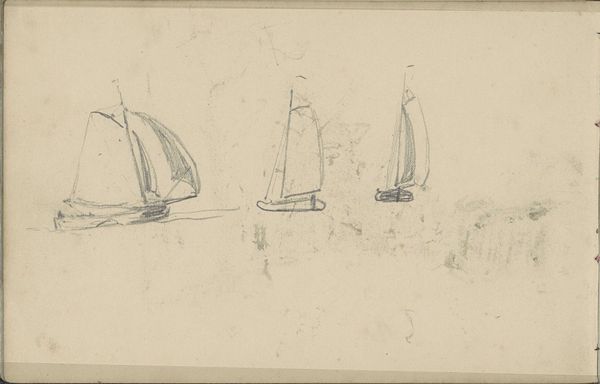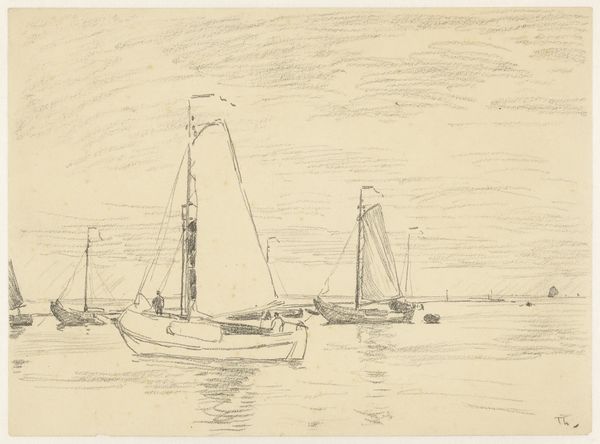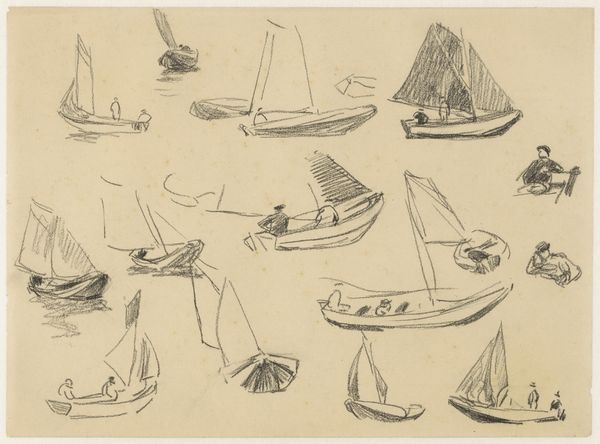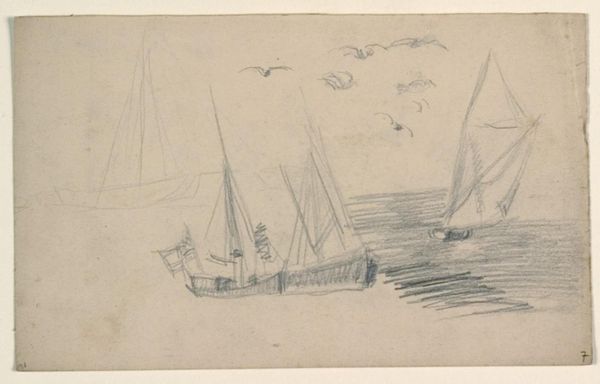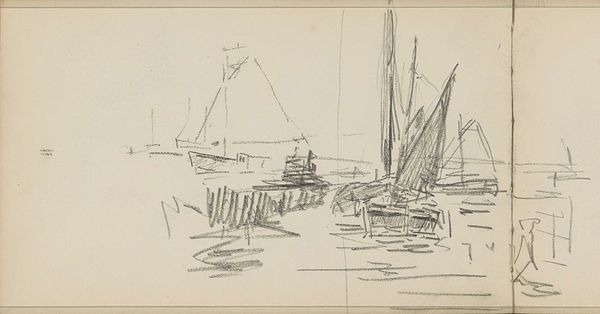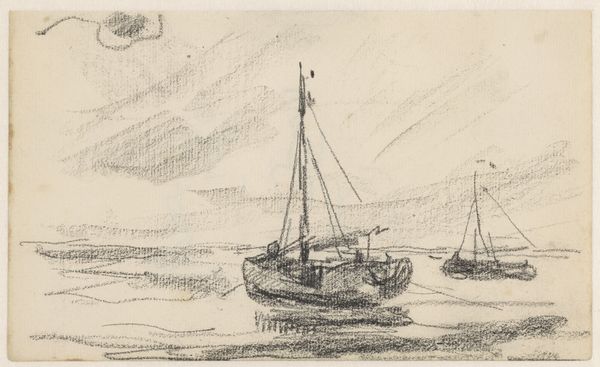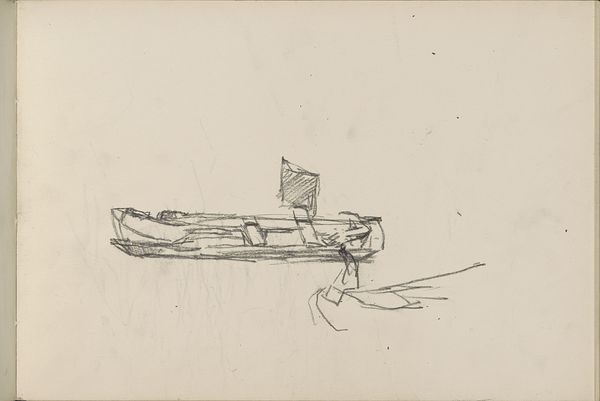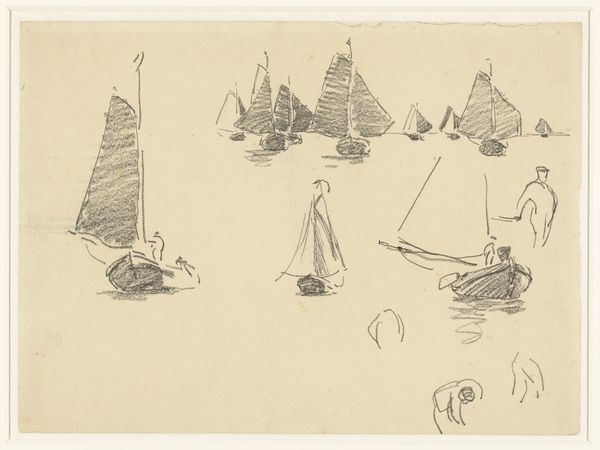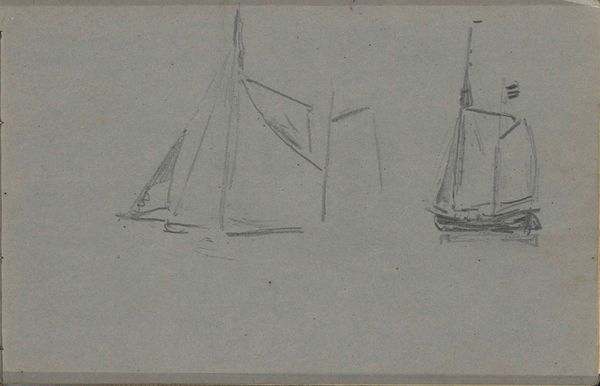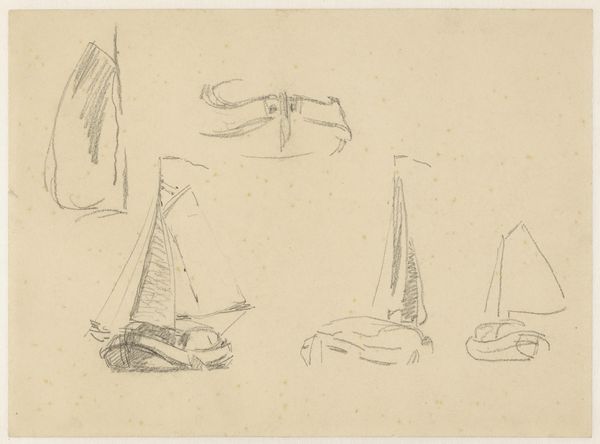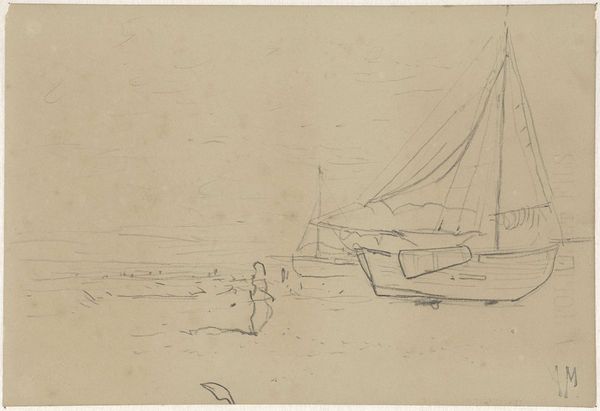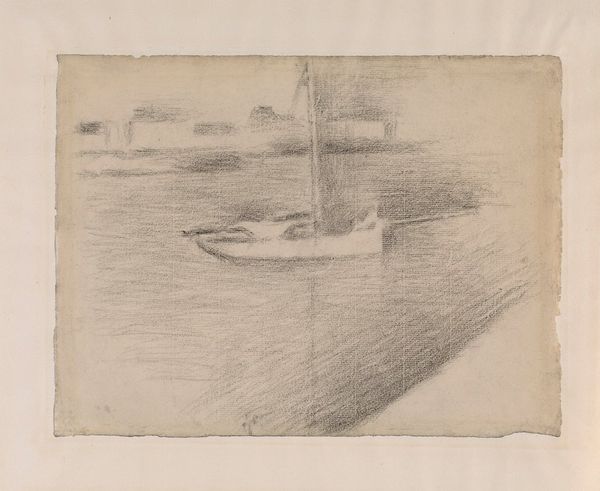
Copyright: Public Domain: Artvee
Curator: Johan Barthold Jongkind created this piece, entitled "Two Sailboats on Calm Water," sometime in the mid- to late 19th century. Editor: There's a real stillness to this sketch, even with the boats present. It’s a very simplified scene but manages to evoke a calm, airy feeling through minimal means. Curator: Indeed. Jongkind, as a predecessor to the Impressionists, often focused on capturing fleeting moments of light and atmosphere. You can see that in the quick, economical lines he uses here to suggest the sails and reflections on the water. The materiality of pencil on paper, and the efficiency of its execution, point to a work created en plein air to capture the scene rapidly. Editor: The composition directs the eye from the sailboat closer to us to the distant shore—almost like a haiku, where every mark has to count. How do you think the context of 19th-century maritime life informed Jongkind's vision? Was it simply about recreation or was there an economic element here? Curator: That’s a good point to consider. Maritime scenes were indeed popular, reflecting both a fascination with travel and the economic realities of trade and fishing. In Jongkind’s case, his access to harbors along the French coast positioned him as an observer of labor and leisure connected to the water. His choice to use a readily available medium such as pencil aligns this sketch more to documenting working conditions than a statement piece of high art, at least materially speaking. Editor: And formally speaking? The open composition—so much untouched space—lends a certain weightlessness, almost spiritual quality. What do you make of the artistic license Jongkind takes here? Curator: I agree. The artistic "license" comes into play as it elevates everyday life through atmospheric conditions. Jongkind wasn’t just representing ships, but a poetic intersection of light, labor, and leisure on water. That pencil has quite a story to tell. Editor: Ultimately, Jongkind makes us think about impermanence – the fleeting nature of light and atmosphere. Curator: Indeed. And consider, too, the conditions in which such sketches would be made, revealing how a simple pencil on paper is enough to render a particular time and place.
Comments
No comments
Be the first to comment and join the conversation on the ultimate creative platform.

